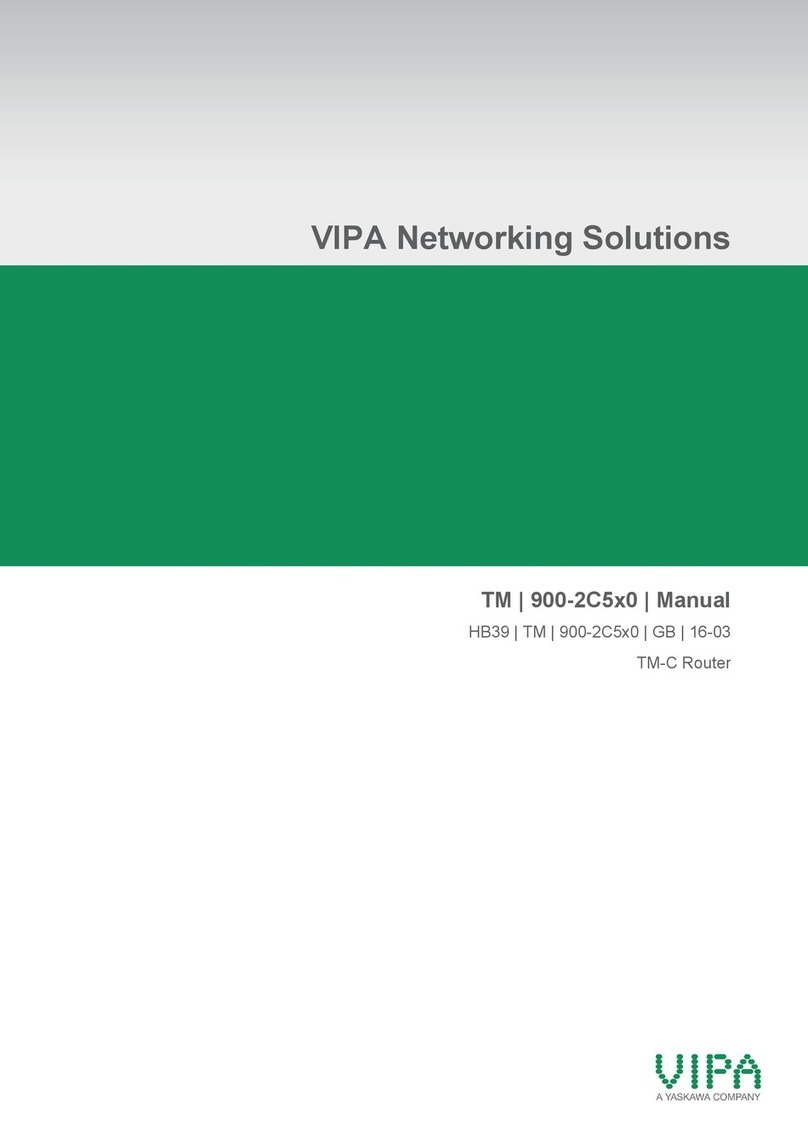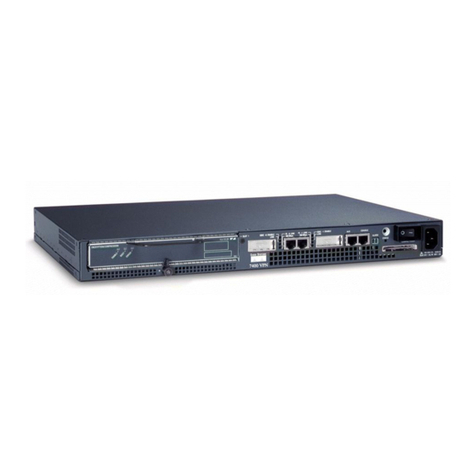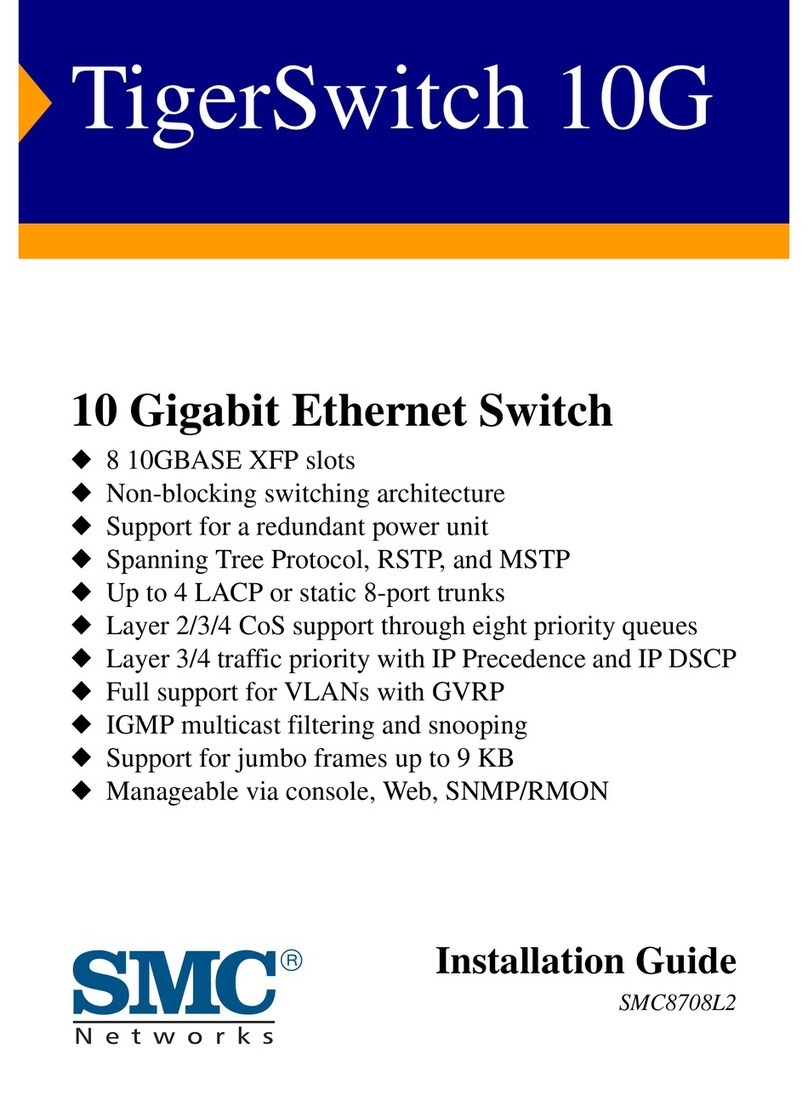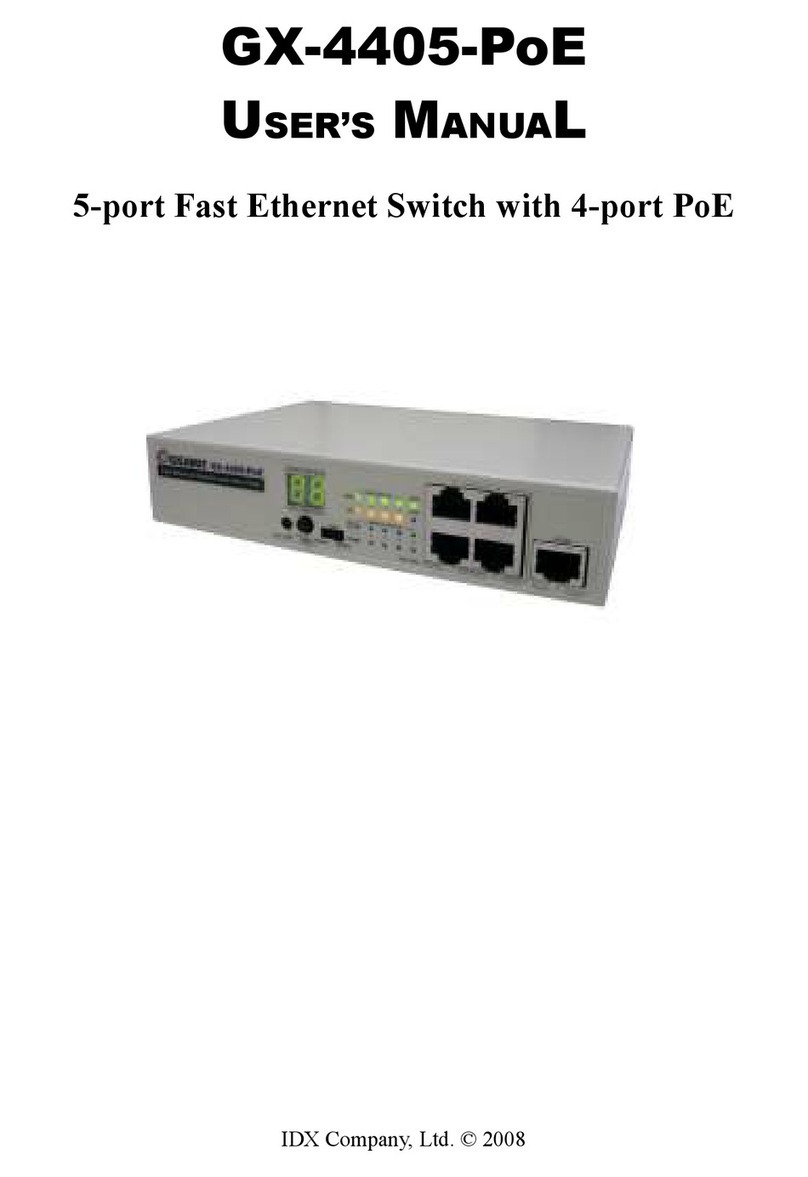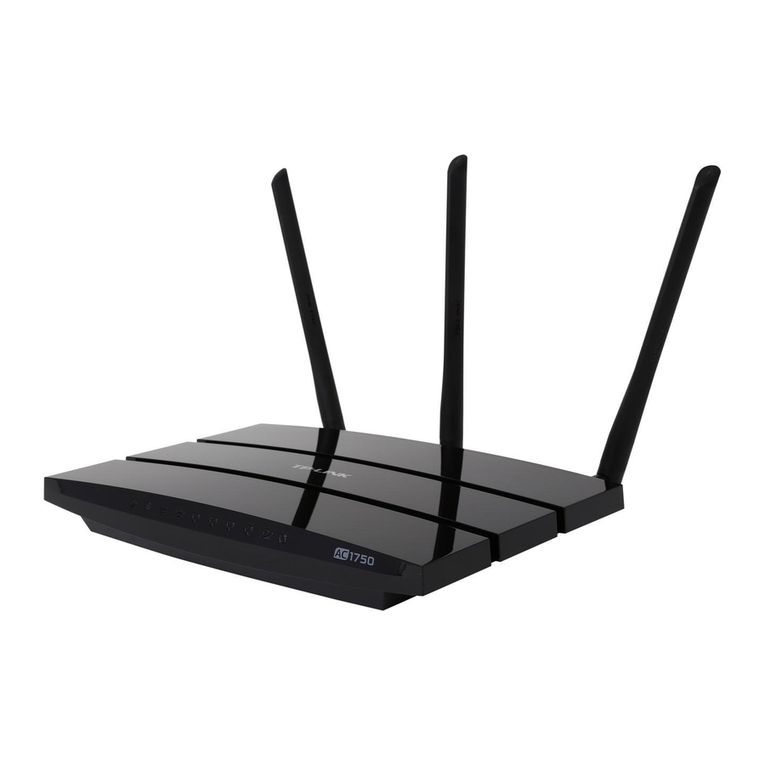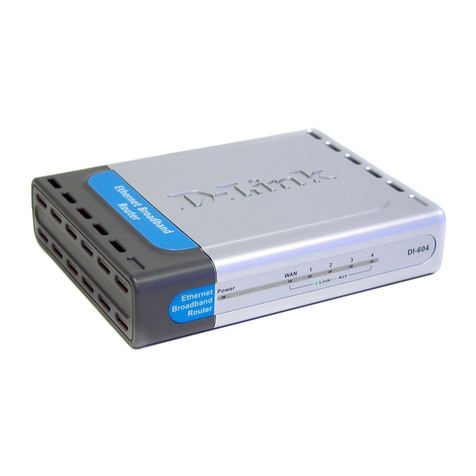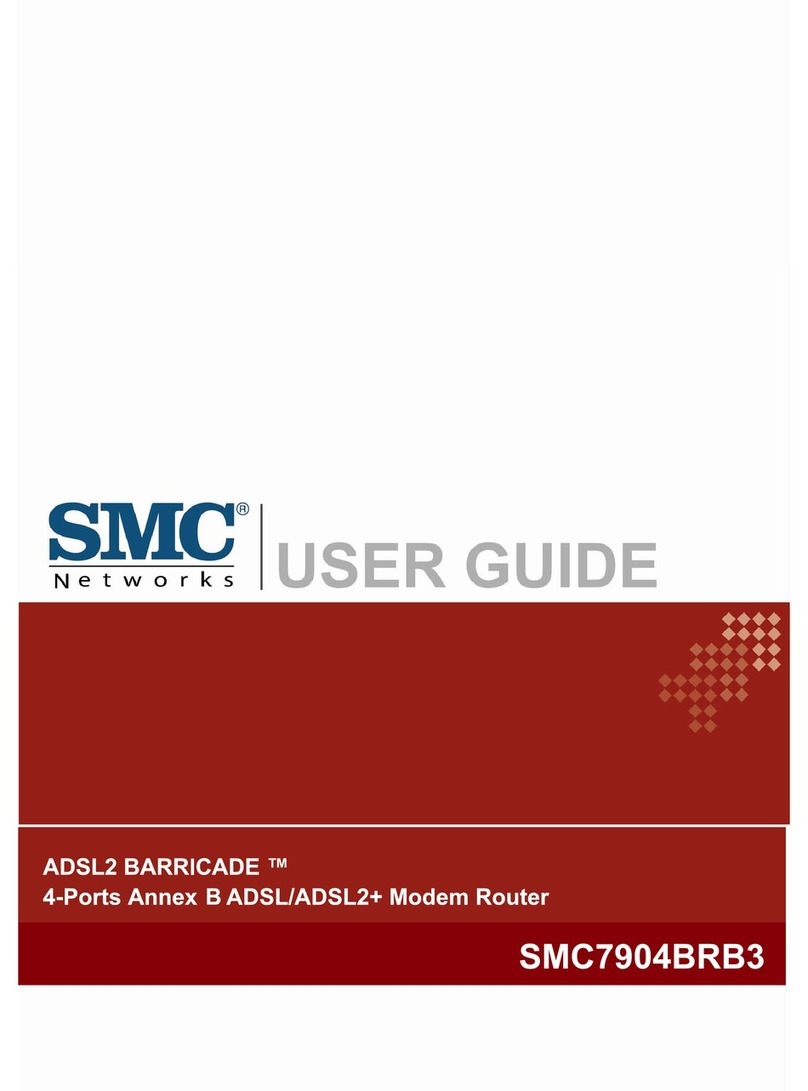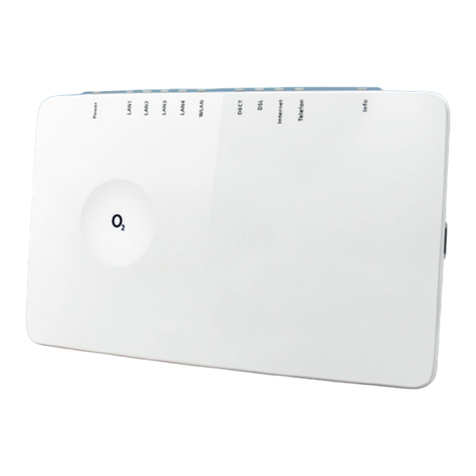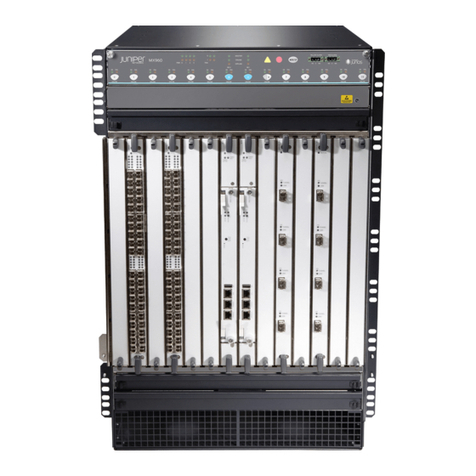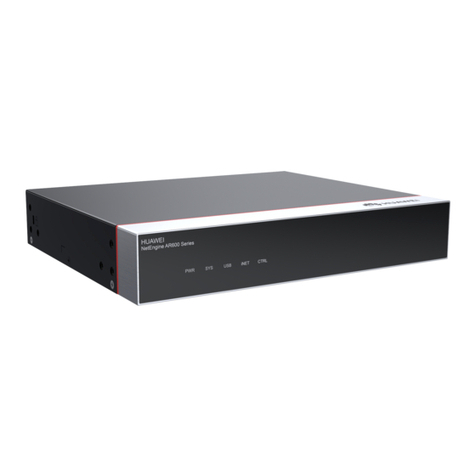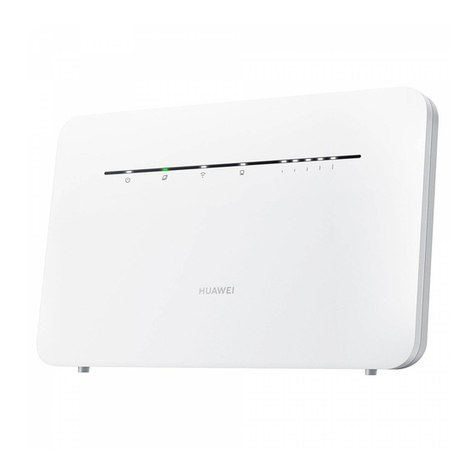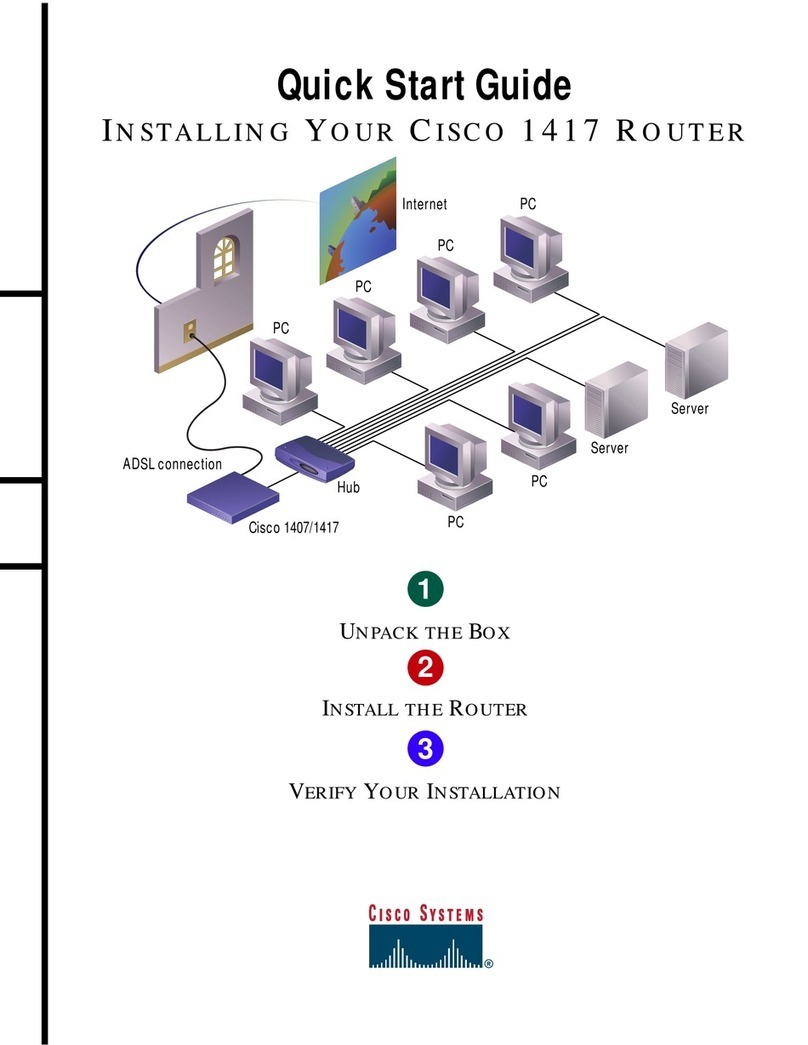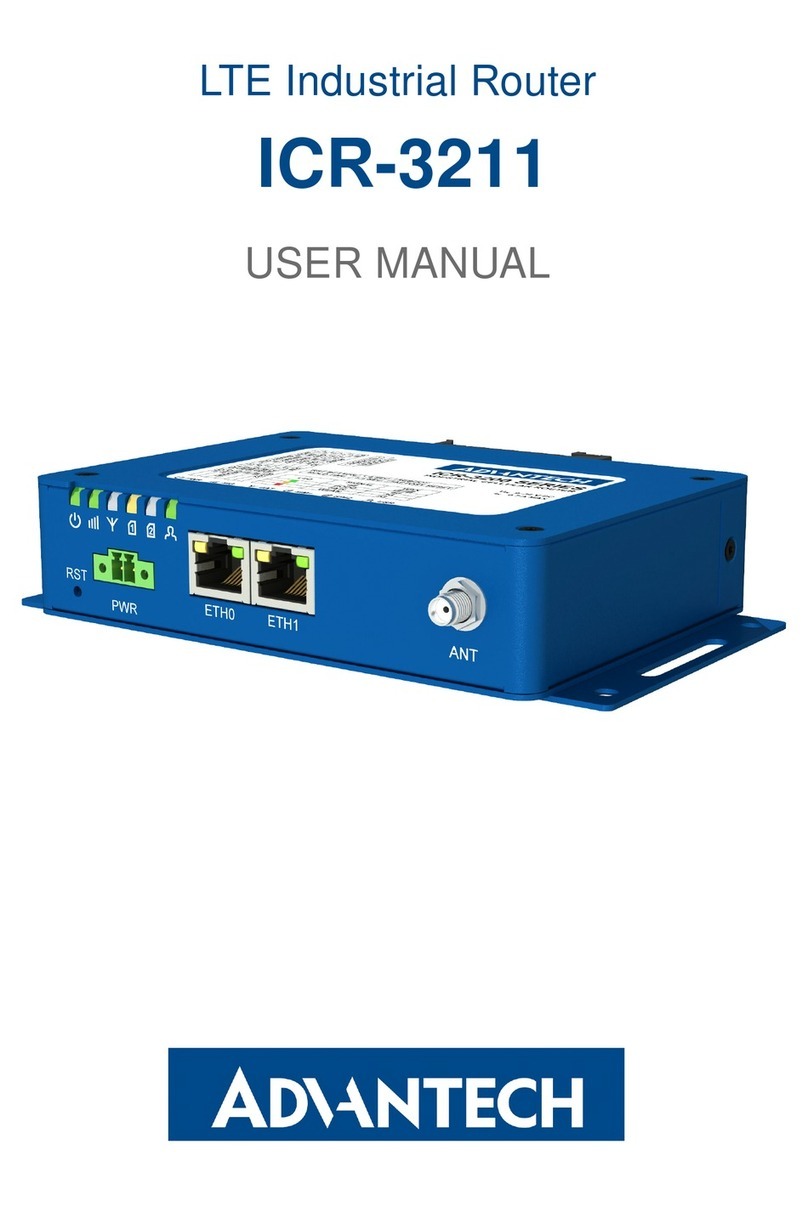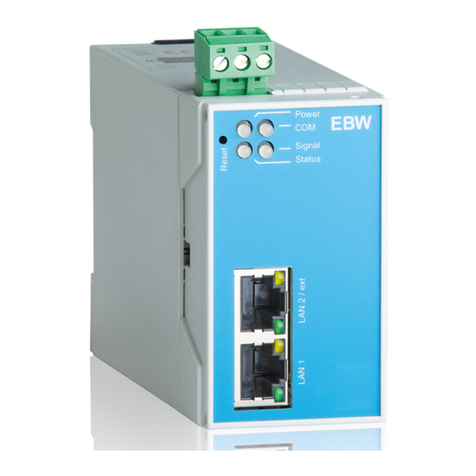VIPA System 300V User manual

VIPA System 300V
CPU | Manual
HB130E_CPU | Rev. 11/50
December 2011

Copyright © VIPA GmbH. All Rights Reserved.
This document contains proprietary information of VIPA and is not to be disclosed or used except in accordance with applicable
agreements.
This material is protected by the copyright laws. It may not be reproduced, distributed, or altered in any fashion by any entity (either
internal or external to VIPA), except in accordance with applicable agreements, contracts or licensing, without the express written
consent of VIPA and the business management owner of the material.
For permission to reproduce or distribute, please contact:
VIPA, Gesellschaft für Visualisierung und Prozessautomatisierung mbH
Ohmstraße 4, D-91074 Herzogenaurach,Germany
Tel.: +49 (91 32) 744 -0
Fax.: +49 9132 744 1864
http://www.vipa.de
Note
Every effort has been made to ensure that the information contained in this document was complete and accurate at the time of
publishing. Nevertheless, the authors retain the right to modify the information. This customer document describes all the hardware
units and functions known at the present time. Descriptions may be included for units which are not present at the customer site. The
exact scope of delivery is described in the respective purchase contract.
CE Conformity
Hereby, VIPA GmbH declares that the products and systems are in compliance with the essential requirements and other relevant
provisions of the following directives:
• 2004/108/EC Electromagnetic Compatibility Directive
• 2006/95/EC Low Voltage Directive
Conformity is indicated by the CE marking affixed to the product.
Conformity Information
For more information regarding CE marking and Declaration of Conformity (DoC), please contact your local VIPA customer service
organization.
Trademarks
VIPA, SLIO, System 100V, System 200V, System 300V, System 300S, System 400V, System 500S and Commander Compact are
registered trademarks of VIPA Gesellschaft für Visualisierung und Prozessautomatisierung mbH.
SPEED7 is a registered trademark of profichip GmbH.
SIMATIC, STEP, SINEC, S7-300 and S7-400 are registered trademarks of Siemens AG.
Microsoft und Windows are registered trademarks of Microsoft Inc., USA.
Portable Document Format (PDF) and Postscript are registered trademarks of Adobe Systems, Inc.
All other trademarks, logos and service or product marks specified herein are owned by their respective companies.
Information product support
Contact your local VIPA Customer Service Organization representative if you wish to report errors or questions regarding the contents
of this document. If you are unable to locate a customer service center, contact VIPA as follows:
VIPA GmbH, Ohmstraße 4, 91074 Herzogenaurach, Germany
Telefax:+49 9132 744 1204
Technical support
Contact your local VIPA Customer Service Organization representative if you encounter problems with the product or have questions
regarding the product. If you are unable to locate a customer service center, contact VIPA as follows:
VIPA GmbH, Ohmstraße 4, 91074 Herzogenaurach, Germany
Telephone: +49 9132 744 1150 (Hotline)
EMail: support@vipa.de

Manual VIPA System 300V Contents
HB130E - CPU - Rev. 11/50 i
Contents
About this manual....................................................................................1
Safety information....................................................................................2
Chapter 1 Basics..............................................................................1-1
Safety Information for Users.................................................................1-2
General description of the System 300V..............................................1-3
Components.........................................................................................1-4
Chapter 2 Assembly and installation guidelines............................2-1
Overview..............................................................................................2-2
Installation dimensions.........................................................................2-3
Installation at the profile rail..................................................................2-4
Cabling.................................................................................................2-6
Installation Guidelines ........................................................................2-10
Chapter 3 Hardware description .....................................................3-1
Introduction..........................................................................................3-2
Operating structure of a CPU...............................................................3-3
Function security of the VIPA CPUs.....................................................3-5
Application fields ..................................................................................3-6
System overview..................................................................................3-8
Structure ............................................................................................3-13
Components.......................................................................................3-17
Technical Data...................................................................................3-23
Chapter 4 Deployment CPU 31x......................................................4-1
Fast introduction...................................................................................4-2
Hints for the deployment of the MPI interface.......................................4-4
Installation............................................................................................4-5
Start-up behavior..................................................................................4-6
Addressing...........................................................................................4-7
Project engineering..............................................................................4-9
Parameter adjustment CPU ...............................................................4-12
Project transfer...................................................................................4-13
Operating modes................................................................................4-19
Overall Reset .....................................................................................4-20
Firmware update ................................................................................4-22
VIPA specific diagnostic entries .........................................................4-25
Using test functions for the control and monitoring of variables..........4-27
Chapter 5 Deployment CPU 31x with Profibus...............................5-1
Overview..............................................................................................5-2
Project engineering CPU with integrated Profibus master....................5-3
Deployment as Profibus DP slave........................................................5-5
Profibus installation guidelines.............................................................5-7
Commissioning and Start-up behavior................................................5-10

Contents Manual VIPA System 300V
ii HB130E - CPU - Rev. 11/50
Chapter 6 Deployment CPU 31x with TCP/IP..................................6-1
Principles..............................................................................................6-2
Protocols..............................................................................................6-4
Network planning .................................................................................6-8
IP address..........................................................................................6-10
Project Engineering of the CPU 31xNET............................................6-11
PG/OP communication.......................................................................6-24
Firmware update and reboot ..............................................................6-27
Access control....................................................................................6-30
Activate clock master .........................................................................6-31
IP parameters.....................................................................................6-33
Activate IPC .......................................................................................6-34
Start-up behavior................................................................................6-35
System properties of the CPU 31xNET..............................................6-36
Communication to other systems.......................................................6-37
Test program for TCP/IP connections................................................6-40
Sample communication TCPTest - CPU 31xNET...............................6-47
Sample communication CPU 31xNET - CPU 31xNET........................6-57
Support for error search.....................................................................6-67
Appendix................................................................................................A-1
Index....................................................................................................A-1

Manual VIPA System 300V About this manual
HB130E - CPU - Rev. 11/50 1
About this Manual
This manual describes the operation of the CPU 31x in the System 300V
from VIPA. The text provides details on the hardware, the programming
and the functions integrated into the unit as well as Profibus and TCP/IP
applications.
Chapter 1: Basics
This introduction includes recommendations on the handling of the
modules of the VIPA System 300V and introduces you to central res.
decentral automation systems.
Chapter 2: Assembly and installation guidelines
All information that you need for installation and cabling of a PLC with
components of the System 300V.
Chapter 3: Hardware description
The CPUs 314 to 317 are available in different variants. This chapter
describes the specifications of these variants.
Chapter 4: Deployment CPU 31x
General information for operating the CPU31x like address allocation,
operating modes, usage of the MMC and the MP-Interface.
Chapter 5: Deployment CPU 31x with Profibus
This chapter contains an description of the installation and configuration of
the System 300V CPUs via Profibus.
Chapter 6: Deployment CPU 31x with TCP/IP
This chapter describes the operating of the CPU31xNET and the
communication via TCP/IP.
Overview

About this manual Manual VIPA System 300V
2 HB130E - CPU - Rev. 11/50
This manual describes the CPUs 31x from VIPA which can be used at the
System 300V. It contains a description of structure, project engineering and
technical data.
The manual is targeted at users who have a background in automation
technology.
The manual consists of chapters. Every chapter provides a self-contained
description of a specific topic.
The following guides are available in the manual:
• an overall table of contents at the beginning of the manual
• an overview of the topics for every chapter
• an index at the end of the manual.
The manual is available in:
• printed form, on paper
• in electronic form as PDF-file (Adobe Acrobat Reader)
Important passages in the text are highlighted by following icons and
headings:
Danger!
Immediate or likely danger.
Personal injury is possible.
Attention!
Damages to property is likely if these warnings are not heeded.
Note!
Supplementary information and useful tips.
Objective and
contents
Target audience
Structure of the
manual
Guide to the
document
Availability
Icons
Headings

Manual VIPA System 300V Safety information
HB130E - CPU - Rev. 11/50 3
Safety information
The CPUs 31x are constructed and manufactured for:
• System 300 components from VIPA and Siemens
• communication and process control
• general control and automation applications
• industrial applications
• operation within the environmental conditions specified in the technical
data
• installation into a cubicle
Danger!
This device is not certified for applications in
• in explosive environments (EX-zone)
The manual must be available to all personnel in the
• project design department
• installation department
• commissioning
• operation
The following conditions must be met before using or commissioning
the components described in this manual:
• Modification to the process control system should only be carried out
when the system has been disconnected from power!
• Installation and modifications only by properly trained personnel
• The national rules and regulations of the respective country must be
satisfied (installation, safety, EMC ...)
National rules and regulations apply to the disposal of the unit!
Applications
conforming with
specifications
Documentation
Disposal

Safety information Manual VIPA System 300V
4 HB130E - CPU - Rev. 11/50

Manual VIPA System 300V Chapter 1 Basics
HB130E - CPU - Rev. 11/50 1-1
Chapter 1 Basics
Main theme of this chapter is to give you an overview about the System
300V from VIPA. We will outline the possibilities of the installation of
central res. decentral systems.
This chapter also contains general information about the System 300V like
measurements, hints for installation and the environmental conditions.
Topic Page
Chapter 1 Basics..............................................................................1-1
Safety Information for Users.................................................................1-2
General description of the System 300V..............................................1-3
Components.........................................................................................1-4
Outline
Content

Chapter 1 Basics Manual VIPA System 300V
1-2 HB130E - CPU - Rev. 11/50
Safety Information for Users
VIPA modules make use of highly integrated components in MOS-
Technology. These components are extremely sensitive to over-voltages
that can occur during electrostatic discharges.
The following symbol is attached to modules that can be destroyed by
electrostatic discharges.
The symbol is located on the module, the module rack or on packing
material and it indicates the presence of electrostatically sensitive
equipment.
It is possible that electrostatically sensitive equipment is destroyed by
energies and voltages that are far less than the human threshold of
perception. These voltages can occur where persons do not discharge
themselves before handling electrostatically sensitive modules and they
can damage components thereby, causing the module to become
inoperable or unusable. Modules, damaged in this way, are normally not
immediately recognized. The according error may occur only after a while
of operation.
Modules that have been damaged by electrostatic discharges can fail after
a temperature change, mechanical shock or changes in the electrical load.
Only the consequent implementation of protection devices and meticulous
attention to the applicable rules and regulations for handling the respective
equipment can prevent failures of electrostatically sensitive modules.
Modules must be shipped in the original packing material.
When you are conducting measurements on electrostatically sensitive
modules you should take the following precautions:
• Floating instruments must be discharged before use.
• Instruments must be grounded.
Modifying electrostatically sensitive modules you should only use soldering
irons with grounded tips.
Attention!
Personnel and instruments should be grounded when working on
electrostatically sensitive modules.
Handling of
electrostatically
sensitive modules
Shipping of modules
Measurements and
alterations on
electrostatically
sensitive modules

Manual VIPA System 300V Chapter 1 Basics
HB130E - CPU - Rev. 11/50 1-3
General description of the System 300V
The System 300V is a modular automation system for middle and high
performance needs, that you can use either distributed or non-distributed.
The single modules are directly clipped to a 530 mm backplane and are
connected together with the help of bus clips at the backside.
The single modules of the VIPA System 300V are design compatible to
Siemens. Due to the compatible backplane bus it is no problem to mix the
modules from VIPA and Siemens.
The CPUs of the System 300V are instruction set compatible to S7-300
from Siemens. The CPUs are programmed via the VIPA programming
software WinPLC7 or the SIMATIC manager from Siemens or other
available programming tools.
The following picture illustrates the performance range of the
System 300V:
System 300V
decentral
Periphery
Profibus
Dig. IN / Dig. OUT / Anal. IN / Anal. OUT / PS
central
for STEP®7 from Siemens
PLC-CPUCAN
The System 300V

Chapter 1 Basics Manual VIPA System 300V
1-4 HB130E - CPU - Rev. 11/50
Components
The System 200V series consists of a number of PLC-CPUs. These are
programmed in STEP7 from Siemens. Herefore you may use WinPLC7
from VIPA or the SIMATIC manager from Siemens.
CPUs with integrated Ethernet interfaces or additional serial interfaces
simplify the integration of the PLC into an existing network or the
connection of additional peripheral equipment.
The application program is saved in Flash or an additional plug-in memory
module.
Because of the automatic addressing, up to 32 peripheral modules can be
called by the System 300V CPUs.
In combination with a Profibus DP master and slave the PLC-CPUs or the
PC-CPU form the basis for a Profibus-DP network in accordance with DIN
19245-3.
The DP network can be configured with the hardware configurator from
Siemens. Together with the hardware configuration you transfer your
project into the CPU via MPI. Another component of the decentral system
is the CAN-Slave. It allows the link-up to the fieldbus system CANopen.
A large number of peripheral modules are available from VIPA, for example
digital as well as analog inputs/outputs.
These peripheral modules can be deployed central as well as decentral.
• Profile rail 530mm
• Peripheral modules with recessed labeling
• Dimensions of the basic enclosure:
1tier width: (WxHxD) in mm: 40x125x120
2tier width: (WxHxD) in mm: 80x125x120
3tier width: (WxHxD) in mm: 120x125x120
Please regard that the power supply and header modules like CPUs and
couplers may only plugged-in at the left side.
VIPA 321-1BH00
DI 16xDC24V
X2
34
.0
.1
.2
.3
.4
.5
.6
.7
.0
.1
.2
.3
.4
.5
.6
.7
SM321
Power Supply I/O PeripheryCPU
DC24V
ON
OFF
PS307/5A
VOLTAGE
SELECTOR
230
L+
M
L+
M
L+
M
L1
N
IN AC 120/230V
2.2/1.3A
50-60Hz
OUT DC 24V/5A
PWR
RUN
STOP
SF
FRCE
MMC
DESL MMC
RUN
STOP
MRES
PLC
X1
VIPA 314-3SL01
X5
X2 X3
PS DVI CF PB-DP
CPU314NET
X2
34
DC 24V +
-
+
-
MP I
2
Central system
Decentral system
Peripheral
modules
Dimensions/
Weight
Installation

Manual VIPA System 300V Chapter 1 Basics
HB130E - CPU - Rev. 11/50 1-5
• Wiring by means of spring pressure connections (CageClamps) at the
front connector
• Core cross-section 0.08...2.5mm2or 1.5 mm2
• Total isolation of the wiring at module change
• Potential separation of all modules to the backplane bus
• Burst/ESD acc. IEC 61000-4-2/IEC 61000-4-4 (up to level 3)
• Shock resistance acc. IEC 60068-2-6 / IEC 60068-2-27 (1G/12G)
• Operating temperature: 0 ... +60°C
• Storage temperature: -25 ... +70°C
• Relative humidity: 5...95% without condensation
• Ventilation by means of a fan is not required
For project engineering of your DP slave you may transfer your projects
from your PC to the CPU serial via MPI by using the "Green Cable". Please
also regard the hints to the Green Cable in this chapter!
Every Profibus slave has an internal power supply. This power supply
requires DC 24V. In addition to the electronics on the bus coupler, the
supply voltage is also used to power any modules connected to the
backplane bus. Please note that the maximum current that the integrated
power supply can deliver to the backplane bus is 3.5A.
The power supply is protected against reverse polarity and overcurrent.
The digital in-/output modules of the System 300V from VIPA are pin and
function compatible to Siemens.
The project engineering happens in the SIMATIC manager from Siemens.
Note!
For programming of a System 300V CPU from VIPA please use always the
CPU 315-2DP (6ES7 315-2AF03 V1.2) from Siemens in the hardware
catalog.
Please note the Profibus address 1 of the CPU 31x is system dependent
reserved.
For the project engineering, a thorough knowledge of the Siemens
SIMATIC manager and the hardware configurator is required!
Reliability
Environmental
conditions
Green Cable
for project
engineering
Integrated
power supply
Compatibility

Chapter 1 Basics Manual VIPA System 300V
1-6 HB130E - CPU - Rev. 11/50

Manual VIPA System 300V Chapter 2 Assembly and installation guidelines
HB130E - CPU - Rev. 11/50 2-1
Chapter 2 Assembly and installation guidelines
In this chapter you will find all information, required for the installation and
the cabling of a process control with the components of the System 300V.
Topic Page
Chapter 2 Assembly and installation guidelines............................2-1
Overview..............................................................................................2-2
Installation dimensions.........................................................................2-3
Installation at the profile rail..................................................................2-4
Cabling.................................................................................................2-6
Installation Guidelines ........................................................................2-10
Outline
Content

Chapter 2 Assembly and installation guidelines Manual VIPA System 300V
2-2 HB130E - CPU - Rev. 11/50
Overview
The single modules are directly installed on a profile rail and connected via
the backplane bus coupler. Before installing the modules you have to clip
the backplane bus coupler to the module from the backside.
The backplane bus coupler are included in the delivery of the peripheral
modules.
G
122
Order number A B C
VIPA 390-1AB60 160mm 140mm 10mm
VIPA 390-1AE80 482mm 466mm 8.3mm
VIPA 390-1AF30 530mm 500mm 15mm
VIPA 390-1AJ30 830mm 800mm 15mm
VIPA 390-9BC00* 2000mm no Drillings 15mm
* Unit pack: 10 pieces
For the communication between the modules the System 300V uses a
backplane bus connector. The backplane bus connector are included in the
delivering of the peripheral modules and are clipped at the module from
behind before installing it to the profile rail.
General
Profile rail
Bus connector

Manual VIPA System 300V Chapter 2 Assembly and installation guidelines
HB130E - CPU - Rev. 11/50 2-3
Installation dimensions
Here follows all the important dimensions of the System 300V.
1tier width (WxHxD) in mm: 40 x 125 x 120
2tier width (WxHxD) in mm: 80 x 125 x 120
3tier width (WxHxD) in mm: 120 x 125 x 120
65mm
40mm 122mm
125 mm
125mm
120mm
175mm
Overview
Dimensions Basic
enclosure
Dimensions
Installation
dimensions

Chapter 2 Assembly and installation guidelines Manual VIPA System 300V
2-4 HB130E - CPU - Rev. 11/50
Installation at the profile rail
You may install the System 300V as well horizontal as vertical. Please
regard the allowed environment temperatures:
• horizontal structure: from 0 to 60°
• vertical structure: from 0 to 40°
The horizontal structure always starts at the left side with the power supply
and the CPU, then you plug-in the peripheral modules beside to the right.
You may plug-in maximum 32 peripheral modules to the CPU.
VIPA 321-1BH00
DI 16xDC24V
X2
34
.0
.1
.2
.3
.4
.5
.6
.7
.0
.1
.2
.3
.4
.5
.6
.7
SM321
Power Supply I/O PeripheryCPU
DC24V
ON
OFF
PS307/5A
VOLTAGE
SELECTOR
230
L+
M
L+
M
L+
M
L1
N
IN AC 120/230V
2.2/1.3A
50-60Hz
OUT DC 24V/5A
PWR
RUN
STOP
SF
FRCE
MMC
DESL MMC
RUN
STOP
MRES
PLC
X1
VIPA 314-3SL01
X5
X2 X3
PS DVI CF PB-DP
CPU314NET
X2
34
DC 24V +
-
+
-
MP I
2
The vertical structure is turned for 90° against the clockwise direction.
VIPA 321-1BH00
DI 16xDC24V
X2
34
.0
.1
.2
.3
.4
.5
.6
.7
.0
.1
.2
.3
.4
.5
.6
.7
SM321
Power Supply I/O PeripheryCPU
DC24V
ON
OFF
PS307/5A
VOLTAGE
SELECTOR
230
L+
M
L+
M
L+
M
L1
N
IN AC 120/230V
2.2/1.3A
50-60Hz
OUT DC 24V/5A
PWR
RUN
STOP
SF
FRCE
MMC
DESL MMC
RUN
STOP
MRES
PLC
X1
VIPA 314-3SL01
X5
X2 X3
PS DVI CF PB-DP
CPU314NET
X2
34
DC 24V +
-
+
-
MP I
2
Structure:

Manual VIPA System 300V Chapter 2 Assembly and installation guidelines
HB130E - CPU - Rev. 11/50 2-5
• Bolt the profile rail with the background (screw
size: M6), so that you still have minimum 65mm
space above and 40mm below the profile rail.
• If the background is a grounded metal or device
plate, please look for a low-impedance connec-
tion between profile rail and background.
• Connect the profile rail with the protected earth
conductor. For this purpose there is a bolt with
M6-thread.
• The minimum cross-section of the cable to the
protected earth conductor has to be 10mm2.
• Stick the power supply to the profile rail and pull it
to the left side to the grounding bolt of the profile
rail.
• Fix the power supply by screwing.
• Take a bus coupler and click it at the CPU from
behind like shown in the picture.
• Stick the CPU to the profile rail right from the
power supply and pull it to the power supply.
• Click the CPU downwards and bolt it like shown.
• Repeat this procedure with the peripheral
modules, by clicking a backplane bus coupler,
stick the module right from the modules you've
already fixed, click it downwards and connect it
with the backplane bus coupler of the last module
and bolt it.
Danger!
• Before installing or overhauling the System 300V, the power supplies
must be disconnected from voltage (pull the plug or remove the fuse)!
• Installation and modifications only by properly trained personnel!
Approach

Chapter 2 Assembly and installation guidelines Manual VIPA System 300V
2-6 HB130E - CPU - Rev. 11/50
Cabling
The power supplies and CPUs are exclusively delivered with CageClamp
contacts. For the signal modules the front connectors are available from
VIPA with screw contacts. In the following all connecting types of the power
supplies, CPUs and input/output modules are described.
Danger!
• Before installation or overhauling, the power supplies must be
disconnected from voltage (pull the plug or remove the fuse)!
• Installation and modifications only by properly trained personnel!
For the cabling of power supplies, bus couplers and parts of the CPU, gray
connectors with CageClamp technology are used.
You may connect wires with a cross-section of 0.08mm2to 2.5mm2. You
can use flexible wires without end case as well as stiff wires.
1
2
[1] Rectangular opening for screwdriver
[2] Round opening for wires
1
2
3
The picture on the left side shows the cabling step by step from top view.
• To conduct a wire you plug a fitting screwdriver obliquely into the
rectangular opening like shown in the picture.
• To open the contact spring you have to push the screwdriver in the
opposite direction and hold it.
• Insert the insulation striped wire into the round opening. You may use
wires with a cross-section from 0.08mm2to 2.5mm2.
• By removing the screwdriver the wire is connected safely with the plug
connector via a spring.
Overview
CageClamp
technology (gray)
Other manuals for System 300V
2
Table of contents
Other VIPA Network Router manuals
